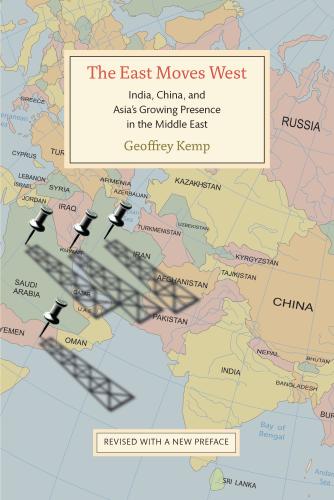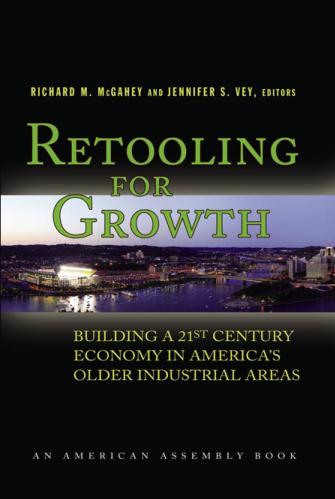Studies in this week’s Hutchins Roundup find that large firms are contributing less to productivity than they did in the past, employer matching events help unemployed workers find jobs, and more.
Want to receive the Hutchins Roundup as an email? Sign up here to get it in your inbox every Thursday.
Superstar firms may not be so super
A large body of research documents the rise of so-called “superstar” firms—large businesses that make up a significant share of the U.S. economy and, according to some economists, an increasingly large share of productivity growth. In contrast, Thomas Philippon and Germán Gutiérrez of New York University show that the shares of total U.S. employment and revenue accounted for by these firms have been roughly constant over the last 60 years, and their contribution to productivity growth has decreased by 40 percent over this period. While the largest firms were contributing about three-quarters of a percentage point to productivity growth prior to 2000, they now contribute less than half a percentage point. These findings suggest there have always been superstars in the U.S. economy, and that so far the new ones have actually underperformed the old ones.
‘Speed dating’ for unemployed workers improves job-finding rate
Many countries provide job search assistance for unemployment insurance (UI) recipients, but it’s not clear whether these programs are effective at improving employment outcomes or reducing spending on UI benefits. Bas van der Klaauw of VU Amsterdam and Lennart Ziegler of the University of Vienna conducted an experiment in the Netherlands to test whether workers who attended “speed dating” events with potential employers were more successful at finding jobs and moving off UI benefits. Job seekers who attended the events were about 7 percentage points more likely to start working one month after the event than those who did not, and were significantly less likely to collect unemployment benefits in the five months after the event. The authors say that the event led workers to expand their job searches, but that most participants who did take jobs found only temporary employment and the positive effect on employment diminished after 8 weeks. Still, the results of the experiment indicate that job-matching assistance can be cost-effective for governments.
International trade can help explain the flattening of the Phillips Curve
Why has inflation been relatively low over the last decade, even as the economy has steadily improved and unemployment has declined? Some have argued that increased international trade and migration have put downward pressure on prices and weakened the relationship between inflation and output, known as the Phillips Curve. Simon Gilchrist of New York University and Egon Zakrajšek of the Federal Reserve Board confirm this hypothesis, showing that inflation is about three times more responsive to changes in output in industries with low international trade exposure than in industries more exposed to trade. The authors show that growth in international trade can explain a large share of the flattening of the Phillips Curve in the 1990s.
Chart of the week: China is aging faster than the United StateS

Quote of the week:
“While there are pockets of risk and global growth is still decelerating, the combination of the policy response and the state of the current imbalances in advanced economies suggest that global growth is more likely than not to stabilise eventually around its new, modest trend. But this is a judgement, not a guarantee. The world is in a delicate equilibrium. Productivity is weak everywhere. The sustainability of debt burdens depends on interest rates remaining low and global trade remaining open. And business and consumer confidence are being buffeted by extreme policy uncertainty. Indeed, there are at least three important risks on the horizon. First, financial risks will intensify if complacency sets in. Paradoxically a prolongation of the expansion could make its demise both more likely and more painful. The frequency of financial crises over history is partly because memories fade, financial lobbies are powerful, and the costs of backsliding on financial reform are invisible, at first. When it comes to financial stability, success is an orphan,” says Mark Carney, governor of the Bank of England.
“The second reason for caution is the possibility of a more material slowdown in China. China is the one major economy in which all major financial imbalances have materially worsened. It may be the exception that proves the rule that financial imbalances cause recessions. While China’s economic miracle over the past three decades has been extraordinary, its post-crisis performance has relied increasingly on one of the largest and longest running credit booms ever, with an associated explosion of shadow banking. […] The final caution concerns the future of globalisation. Trade tensions abroad and Brexit debates at home are manifestations of fundamental pressures to reorder globalisation. It is possible that new rules of the road will be developed for a more inclusive and resilient global economy. At the same time, there is a risk that countries turn inwards, undercutting growth and prosperity for all. Concerns over this possibility are already impairing investment, jobs and growth, creating a dynamic that could become self-fulfilling.”
The Brookings Institution is committed to quality, independence, and impact.
We are supported by a diverse array of funders. In line with our values and policies, each Brookings publication represents the sole views of its author(s).










Commentary
Hutchins Roundup: Superstar firms, speed dating employers, and more
February 14, 2019